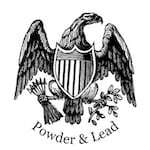
Introduction
Few firearms in history have achieved the reputation and battlefield presence of the M1918 Browning Automatic Rifle (BAR). Designed by the legendary John Moses Browning, the BAR provided American forces with an automatic rifle capable of delivering high firepower with maneuverability, filling a critical gap in infantry tactics from World War I through Vietnam. This article explores the development, manufacturing, specifications, and operational history of the BAR in comprehensive detail, solidifying its place as one of the most iconic weapons of the 20th century.
Development and Predecessors
The need for a portable, automatic infantry rifle became evident during the early 20th century. The United States, lagging behind European nations in adopting squad-level automatic weapons, recognized this gap during World War I. At the time, many European forces employed light machine guns, such as the Lewis Gun (British) and Chauchat (French), but these designs had their drawbacks.
John Moses Browning, one of history’s most prolific firearm designers, began work on a gas-operated, magazine-fed automatic rifle in 1916, specifically aiming to provide U.S. infantry squads with a lightweight automatic weapon. Unlike earlier designs, such as the M1895 Colt-Browning “Potato Digger” machine gun, which was belt-fed and tripod-mounted, the BAR was meant to be fired from the shoulder or hip.
Key Predecessors:
- M1895 Colt-Browning Machine Gun: Early gas-operated design but too cumbersome.
- French Chauchat: The standard automatic rifle for U.S. troops in 1917 but plagued by reliability issues.
- Lewis Gun: A widely used light machine gun, but bulkier and heavier than Browning’s concept.
Browning’s BAR was tested extensively and first demonstrated to U.S. military officials at Congress Heights, Washington, D.C., in 1917. It was officially adopted as the Rifle, Caliber .30, Automatic, Browning, M1918 in July 1918.
Manufacturing History
Due to the urgent wartime need, BAR production was undertaken by multiple manufacturers.
World War I Production
The first BARs were produced in 1918 by:
- Winchester Repeating Arms: ~13,000 units
- Colt Firearms: ~9,000 units
- Marlin-Rockwell Corporation: ~16,000 units
By the Armistice of November 11, 1918, approximately 52,000 M1918 BARs had been manufactured, though only a fraction saw combat.
Interwar Production and Improvements
During the 1920s and 1930s, Colt continued manufacturing the BAR, selling it internationally and modifying it for various armed forces.
- M1922 BAR: Modified with a bipod and heavy barrel for increased sustained fire capability.
- Commercial models: Adopted by Belgium, Sweden, and Poland.
World War II Expansion
With the outbreak of World War II, BAR production resumed with a focus on the M1918A2 variant, featuring:
- Fire rate selector (Slow: ~300 rpm, Fast: ~650 rpm)
- Extended foregrip and bipod
- Flash suppressor and reinforced stock
Manufacturers included:
- New England Small Arms Corporation
- IBM
- Royal Typewriter Company
- Springfield Armory
By 1945, over 208,000 additional BARs had been produced.
Post-WWII and Korea
The BAR remained a standard U.S. automatic weapon through the Korean War (1950-1953). Despite the emergence of more modern general-purpose machine guns (GPMGs), the BAR was retained due to its reliability and firepower.
By the late 1950s, total BAR production exceeded 350,000 units.
Specifications and Technical Features
| Feature | Specification |
|---|---|
| Caliber | .30-06 Springfield (7.62x63mm) |
| Operation | Gas-operated, long-stroke piston, open bolt |
| Firing Modes | Full-auto (M1918), Full-auto (M1918A2 with 2-stage fire rate) |
| Rate of Fire | 300-650 rounds per minute |
| Barrel Length | 24 inches (610mm) |
| Overall Length | 47 inches (1194mm) |
| Weight | 16-19.4 lbs (varies by variant) |
| Magazine Capacity | 20 rounds (detachable box magazine) |
Cartridge Performance
The .30-06 Springfield round provided the M1918 BAR with exceptional range and stopping power.
- M1 Ball (WWI/early WWII): 150-grain bullet, ~2,700 fps
- M2 Ball (standard WWII/Korea): 152-grain bullet, ~2,800 fps
- M2 AP (Armor-Piercing): Used against light vehicles and fortifications
Combat Use and Effectiveness
The BAR saw extensive service in four major wars:
- World War I (1918): Limited combat use, intended for mobile assault squads.
- World War II (1939-1945): Issued as the primary squad automatic weapon (SAW) for U.S. infantry squads.
- Korean War (1950-1953): Vital in repelling Chinese human wave attacks.
- Vietnam War (1955-1975): Early war use, phased out by M60 machine gun.
Strengths of the BAR
✔️ Reliable and durable in harsh conditions
✔️ High firepower compared to bolt-action and semi-auto rifles
✔️ Superior stopping power with .30-06
Weaknesses of the BAR
❌ Heavy weight (~19 lbs with bipod)
❌ Limited magazine capacity (20 rounds vs. belt-fed MGs)
❌ Difficult sustained fire control compared to belt-fed LMGs
Comparison to Other Automatic Weapons
| Weapon | Country | Caliber | Fire Rate | Capacity |
|---|---|---|---|---|
| M1918 BAR | USA | .30-06 Springfield | 300-650 rpm | 20-round mag |
| Bren Gun | UK | .303 British | 500 rpm | 30-round mag |
| MG42 | Germany | 7.92x57mm Mauser | 1,200 rpm | Belt-fed |
| Type 96 LMG | Japan | 6.5x50mm Arisaka | 550 rpm | 30-round mag |
Conclusion
The M1918 Browning Automatic Rifle remains one of the most influential firearms of the 20th century. Designed to enhance infantry firepower, it evolved into a battle-proven, highly reliable weapon that saw continuous service for over four decades. Though ultimately replaced by modern GPMGs and assault rifles, its legacy endures in military history, firearm collections, and historical reenactments worldwide.
With over 350,000 produced, the BAR remains a symbol of American ingenuity and battlefield effectiveness—a firearm that truly defined an era.
Discussions on the BAR can be found here.
Read more about the M1918 BAR here:
If you know of any forums or sites that should be referenced on this listing, please let us know here.











